On the slopes of Monte Baldo, overlooking Lake Garda, grows an ancient and majestic tree that produces an equally precious fruit: the Marrone of San Zeno. Around it, over the centuries, a culture has developed, made of slow gestures, farming traditions, and handed-down knowledge that still lives on today in the chestnut groves, local cuisine, and village festivals. A world scented with earth, wood, and autumn, where each marrone tells a story of hard work, flavour, and identity.
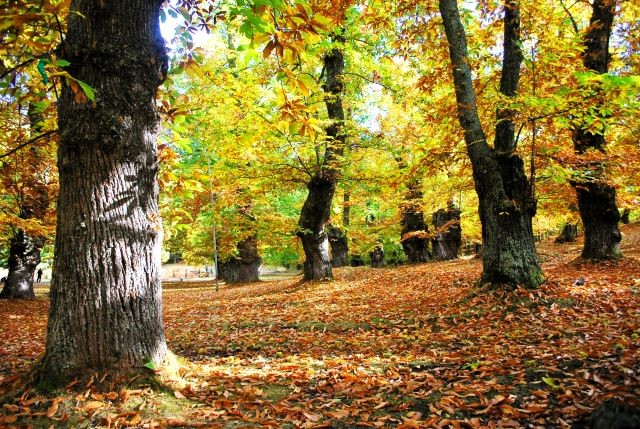
Chestnut or Marrone?
The difference between a chestnut and a marrone is more fascinating than one might think—so much so that it has divided experts and enthusiasts for centuries. A marrone is actually a variety of chestnut, but of superior quality, renowned for its larger size, sweeter flavour, and culinary versatility, especially in pastry-making. What distinguishes it is not only the taste, but also its structure: each burr contains one to three fruits at most, each intact and easy to peel, with a thin skin that does not penetrate the flesh. Botanical differences, including those in the flowers, make the distinction even more complex. The marrone has been so highly prized that it has been at the center of a flourishing trade since the Middle Ages—as in the case of the famous Marrone of San Zeno, grown on the heights of Monte Baldo. Here, at altitudes between 600 and 850 meters, chestnut groves lovingly tended for generations bear fruit that is not just a harvest, but a symbol of local excellence.
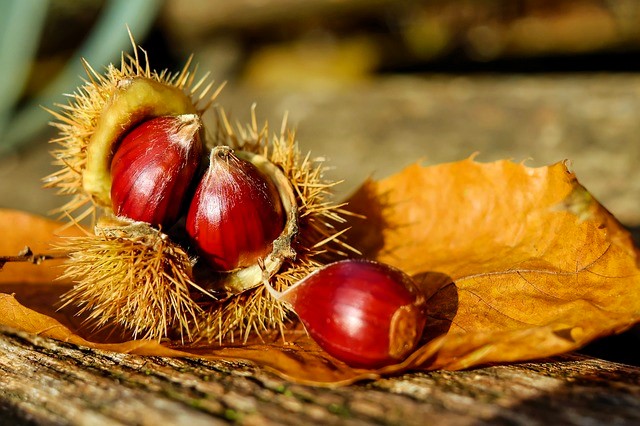
Cultivation and harvest: Ancient knowledge
In the San Zeno area, growing chestnut trees is more than a job—it’s a centuries-old tradition rooted in the Middle Ages, still passed down today as precious knowledge. The groves, majestic and centuries old, stretch across the slopes of Monte Baldo, where the mild climate and acidic soil create the ideal conditions for high-quality production. Work begins in summer with pruning and clearing of the ground, but intensifies from late September to November. When the burrs begin to open, the marroni are gently knocked down using slender bamboo poles, then hand-picked from the ground and carefully sorted. Once collected, they are taken to the "rissara", where they ferment outdoors for about two weeks—a natural, age-old method to help the burrs open and to protect the fruit from mold and pests. Alternatively, there’s the "novena", in which the marroni are immersed in fresh water for nine days (changing the water every two), followed by slow drying on terracotta floors. All this is done without chemical treatments or invasive techniques: farming practices are eco-friendly, with intentionally limited yields and great care for the health of the trees. Today, 70% of production is certified organic, confirming a deep commitment to environmental protection and product quality. A respectful supply chain that values every gesture, every season, and every single fruit.
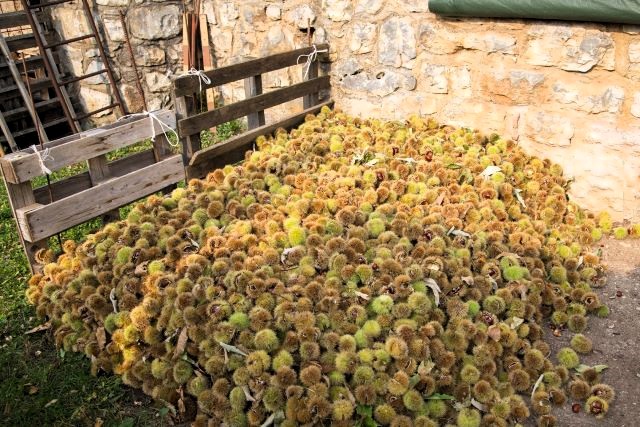
The Mountain Community Superfood
For centuries, the chestnut has been much more than a simple fruit: it was a vital resource for mountain communities, so much so that it was called “the grain that grows on trees.” Rich in starch, protein, minerals, and vitamins, it was a staple of daily nutrition, especially during the harshest months. It was eaten roasted in ashes, boiled or fire-roasted, and also ground into flour for making bread, polenta, and other hearty dishes. It wasn’t just nourishment: chestnuts were also considered a natural remedy, used to treat fevers, poisonings, and even the plague. Today, while modern medicine downplays those curative claims, it does recognize chestnuts' energizing and mineral-replenishing qualities—ideal even for athletes. A humble yet extraordinary fruit that nourished generations and still tells the story of the strength and ingenuity of mountain people.
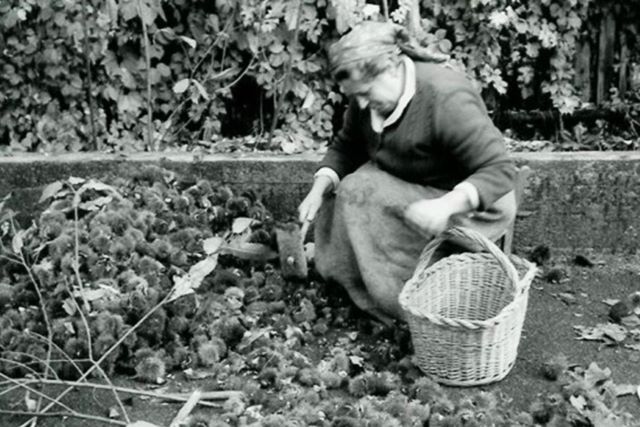
The many Uses of the Marrone
The Marrone of San Zeno is not just a prized fruit—it’s a true protagonist of the local cuisine. One of the simplest and most authentic ways to enjoy it is as peladèi—peeled marroni cooked in salted water with sage—also the key ingredient in the area's most iconic dish: minestrone coi marroni, a rich variation of the classic Venetian bean soup. On Monte Baldo’s slopes, locals also prepare biscoti—delicious roasted marroni cooked in a special perforated pan called barbèra. But the versatility of this fruit doesn’t stop there: it stars in castagnaccio with Garda olive oil, chestnut rolls, marroni candied in grappa, marronata (a chestnut spread), and even in the local craft beer "Castanea". Sweet or savory, rustic or refined, the marrone captures the flavours of autumn and tells a story of tradition, taste, and creativity.
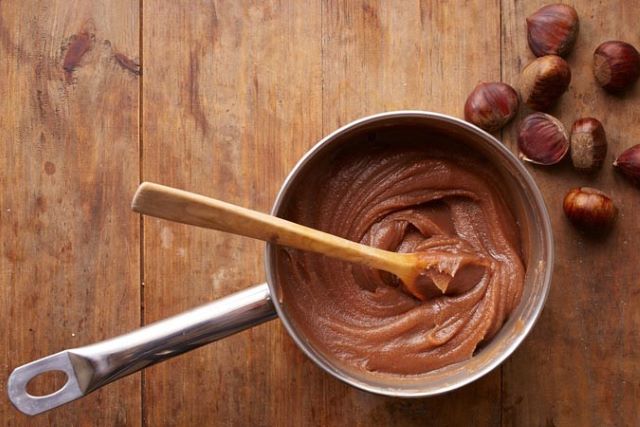
"La Festa del Marrone di San Zeno"
Every year, from late October to early November, San Zeno di Montagna celebrates one of its most treasured symbols with the Festa del Marrone. During peak harvest time, the village comes alive with markets, autumnal aromas, and authentic flavours—offering a unique opportunity to discover the P.D.O. certified Marrone of San Zeno and its long-standing tradition. At the heart of the event is the Mostra Mercato (Market Fair), where visitors can sample the marrone in countless preparations—from rustic dishes to elaborate desserts—paired with local wines. Alongside food, there’s also local crafts, folk music, and community events like the Palio Gastronomico delle Contrade and the Marron d’Oro contest, which awards the best producers. More than just a food festival, it’s a true celebration of the land—blending culture, agriculture, and identity.
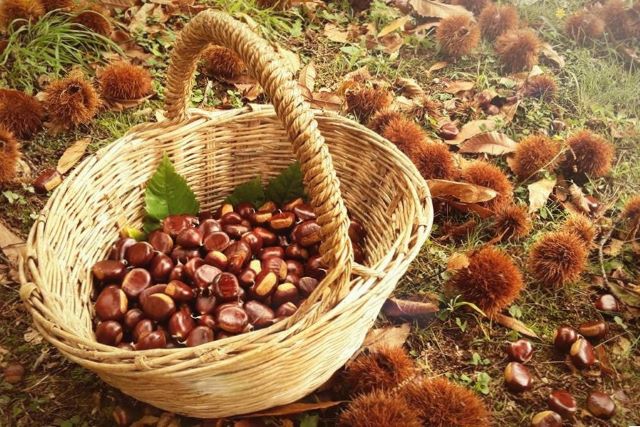
Thanks to the dedication of local producers and the protection of its P.D.O. status, the Marrone of San Zeno remains a living and respected resource. A fruit that tells the story of its land, and that—through its woods, traditions, and flavours—continues to renew its deep bond with the people and the soil of Monte Baldo year after year.

